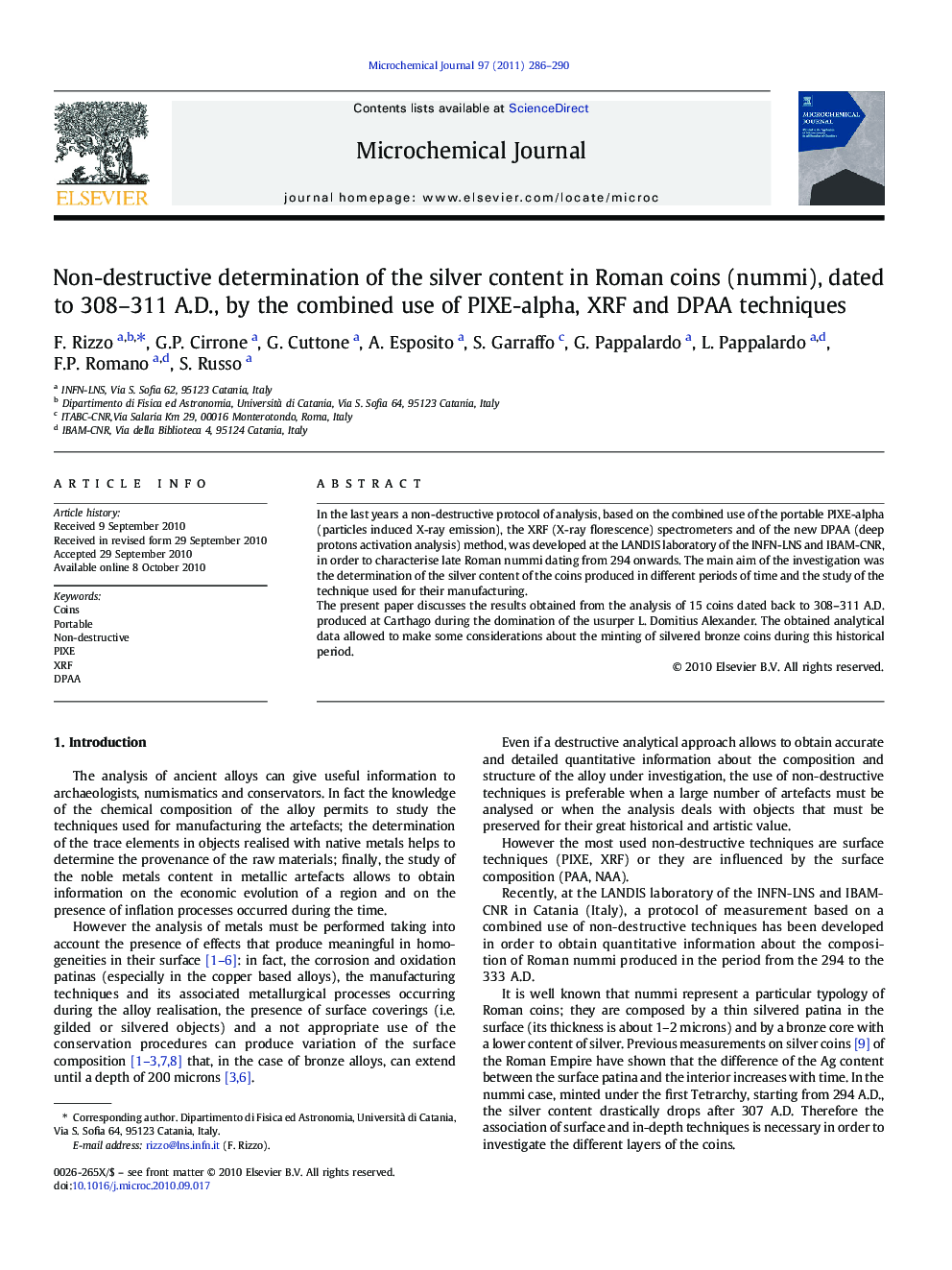| Article ID | Journal | Published Year | Pages | File Type |
|---|---|---|---|---|
| 1228148 | Microchemical Journal | 2011 | 5 Pages |
In the last years a non-destructive protocol of analysis, based on the combined use of the portable PIXE-alpha (particles induced X-ray emission), the XRF (X-ray florescence) spectrometers and of the new DPAA (deep protons activation analysis) method, was developed at the LANDIS laboratory of the INFN-LNS and IBAM-CNR, in order to characterise late Roman nummi dating from 294 onwards. The main aim of the investigation was the determination of the silver content of the coins produced in different periods of time and the study of the technique used for their manufacturing.The present paper discusses the results obtained from the analysis of 15 coins dated back to 308–311 A.D. produced at Carthago during the domination of the usurper L. Domitius Alexander. The obtained analytical data allowed to make some considerations about the minting of silvered bronze coins during this historical period.
